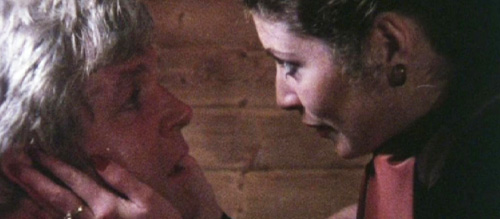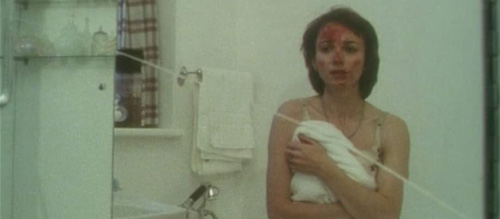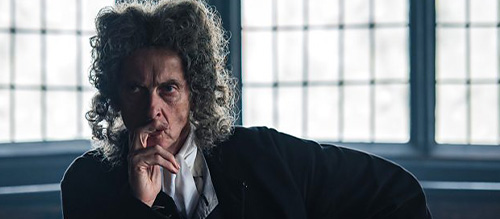A Ghost Story for Christmas Films Ranked
On 7th May, 1968, the British Broadcasting Corporation (BBC) released a short film adaptation of M.R. James’ classic ghost story, “Oh, Whistle, and I’ll Come to You, My Lad” as part of its omnibus programming. The success of this little film would revive interest in James and the classic ghost story, and in 1971 the BBC released the first of its A Ghost Story for Christmas films, an adaptation of James’ story, “The Stalls of Barchester Cathedral”. In the following years, seven more films would be released, one each year at christmastime, mostly James stories, but with two original tales and an adaptation of Dickens in there as well, before the series was shelved in 1978.
In 2005, BBC4 revived the series, beginning with an adaptation of James’ story “A View from a Hill”, and there have been nine films made intermittently in the years following, all M.R. James adaptations barring two (one original story and one adaptation of a story by Sir Arthur Conan Doyle).
In the spirit of Christmas spooks, and the old tradition of gathering around the fire to tell a ghost story (as Dickens himself loved to do; he was responsible for many famous writers of the day giving ghost stories for anthologies specifically for Christmas, including Wilkie Collins, Elizabeth Gaskell and Robert Louis Stephenson), in this edition of Ranked we at The Film Magazine are taking all seventeen films, including the classics and the new releases, and ranking them for your reading and viewing pleasure. Sit back with a mug of cocoa, a roaring fire, and get ready to feel a little chill go across the bones. These are A Ghost Story for Christmas Films Ranked.
Follow @thefilmagazine on Twitter.
17. The Ice House (1978)

The second of two original stories created in the original run, The Ice House is the film which pretty much closed up shop on the series for nearly three decades.
In this tale, a gentleman staying at a luxury hotel in the countryside befriends the owners, a young brother and sister duo who seem to have the best interests of their residents at heart. But occasionally Paul feels some cold spells pass across him, and there’s definitely something strange and secretive about a modern, up-to-date establishment like this, with all its fridges and freezers, still having an ice house down the end of the garden.
The first film in the series to be directed by someone other than Lawrence Gorden Clark, the film suffers from being decidedly un-spooky, with a lack of chills save for perhaps one scene nearer the end. Irritatingly, it is also very uninteresting.
Ghosts are lacking in this ghost story, and whilst the performances try to lend… something, to the tale, it never really manages to rattle any chains. The final reveals are bland, and it’s easy to finish the film having forgotten pretty much everything as soon as it was said.
16. Stigma (1977)

The first of the two original stories from the original run, Stigma sees a mother at the mercy of an avenging spirit when a great boulder is moved from their garden. Now she’s bleeding everywhere, though there’s not a mark on her body, and her very life may be in danger…
Stigma is a fun concept, and it was certainly a risk for the series to both set a film in the modern day, and not be an adaptation of a previous work. Filmed in Avebury in Whiltshire, which was also used that year for the underrated family dark fantasy/folk horror serial ‘Children of the Stones’, there’s an attempt to blend past and present, bringing the traditional ghost story into the modern viewing age with an emphasis on bright red blood (hence the stigmata of the title) which possibly reflected the increase in explicit violence in film and TV happening in recent years. Despite this, the film just sort of… ends, and you can throw as much blood on the screen as you want; if it doesn’t chill the bones, it isn’t what we’re after.
Watch ‘Children of the Stones’, if you want good, spooky folk horror in the same setting in the same year.
Recommended for you: Blood Junkies (1993) Review
15. Martin’s Close (2019)

Peter Capaldi had acted in two ‘Doctor Who’ stories written by Mark Gatiss in the past, and now, not only is he back under Gatiss’ writing thumb, but also his directorial control (point to note: you’ll see many more ‘Doctor Who’ links as this list progresses).
This M.R. James adaptation has Simon Williams’ narrator regale us with a tale about a strange court case from the past, in which Capaldi’s Dolben must present the evidence for the conviction of a young man, Mr John Martin, on trial for the murder of a young woman. The strange part is, she has been seen by multiple witnesses, after she died.
This adaptation isn’t necessarily bad. The acting is strong (especially that of Peter Capaldi, but we all expected this), the direction is fine, and everything is generally ok. But therein lies the rub; it is ok. Nothing stands out, nothing really gets you sitting back in the armchair with your fingernails scratching at the leather.
Whilst the storyteller dramatisation idea with Simon Williams in his home is a commendable idea to recreate the story-by-the-fireside cosy feeling, it functions to interrupts the flow of the story when it shouldn’t, and constantly brings you out of any kind of immersion you might have felt. Despite everyone trying their best with what they have, it just doesn’t come together.

